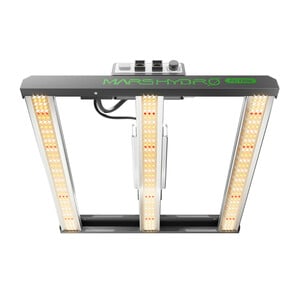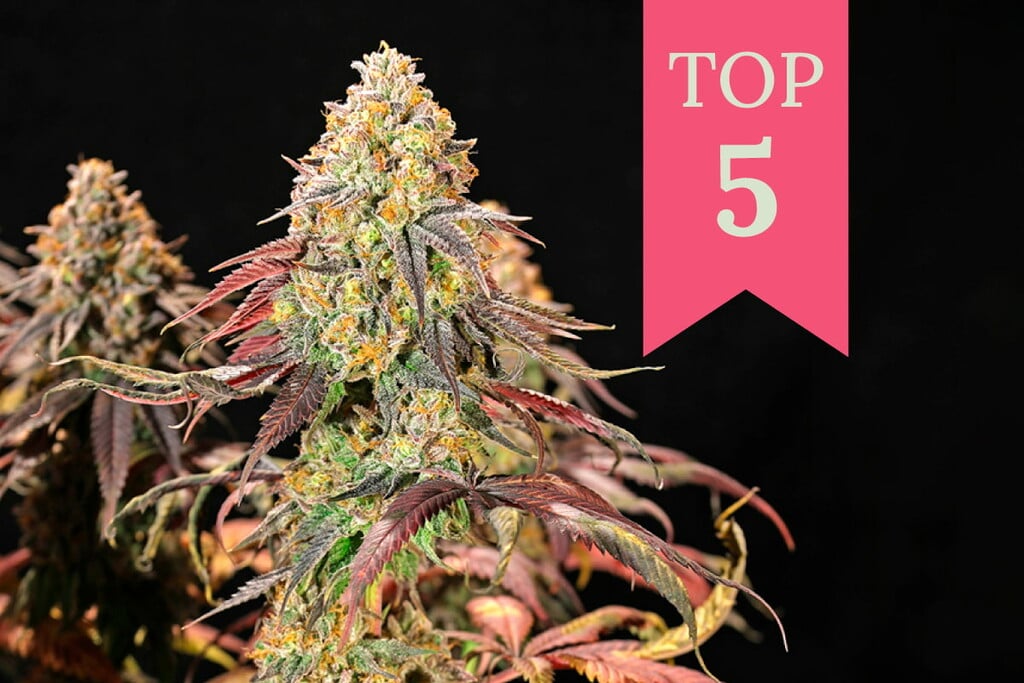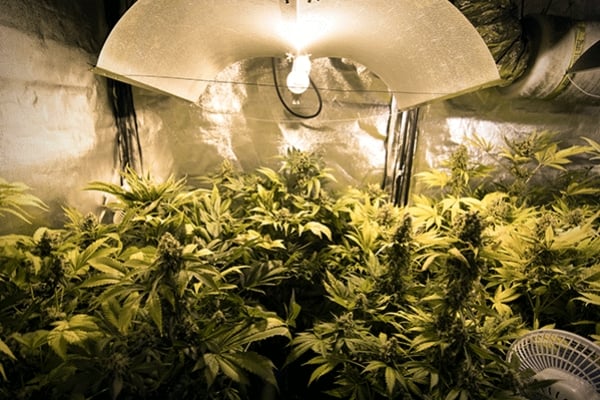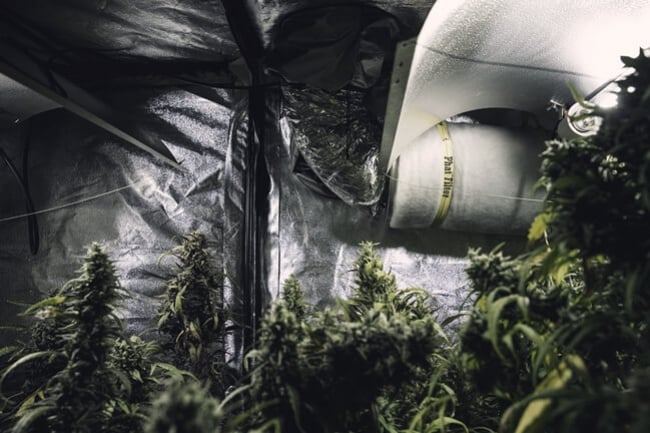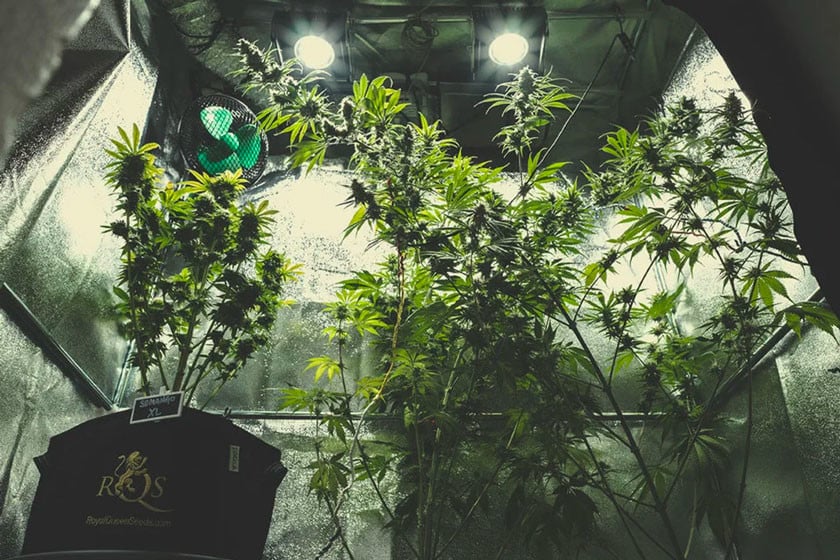.

How Much Does It Cost to Grow Weed Indoors?
Recent global events have caused energy prices to soar in certain countries. As your bills increase, you're probably looking at your grow lights as energy-sucking culprits. But don't worry—we've got you covered. Use our accurate energy cost calculator to keep track of your outgoings and monitor how much energy your lights and fans are using.
Contents:
Growing cannabis indoors has a lot of advantages. It provides you with total control over your plant’s environment. It’s discreet, and it gives cannabis lovers without outdoor gardens a chance to connect with the amazing plant.
Unfortunately, there’s one seemingly big downside to indoor growing: the cost. The post-pandemic economy and conflict in Eastern Europe have led to a high demand for power and a reduced supply, causing costs to surge. Plants need near-constant light, as well as oscillating fans, inline fans, and possibly humidifiers, heaters, and air conditioners. Right now, you’re probably a tad worried about your grow room electric bill. However, just like the rest of the population, cultivators can take several steps to reduce the figures on their monthly bill.
The Average Cost of Building an Indoor Grow Room
To build a proper indoor grow space, you’ll need a grow light, an exhaust system, fans, and a grow tent. Costs build up here, but the best of these products will save you lots of money as time goes on.
Grow Light Cost Calculator
Seedling Stage
Calculator results
Vegetative Stage
Flowering Stage
Grow Light Cost Calculator
Seedling Stage
Calculator results
Vegetative Stage
Flowering Stage
Grow Lights
The grow lights are the heart of your grow room, and will have the biggest impact on the growth of your plants, and, ultimately, the size and quality of your harvest. The 3 most commonly used grow lights among cannabis growers are:
Fluorescent Lights:
- Cheap and available virtually anywhere.
- Great choice for hobby gardeners working with a limited amount of space.
- Produce smaller yields than HIDs or LEDs.
High-Intensity Discharge (HID):
- Higher yields than fluorescent lights.
- Only around 25–30% of the energy is emitted as light. The rest is emitted as heat (requires additional exhaust system and fans).
Light Emitting Diodes (LED):
- The most energy-efficient lights on the market
- Long-lasting
- Don’t emit nearly as much heat as HID lights.
- Most expensive option
To produce the best possible yields, we recommend you provide your plants with at least 400–650 watts of light per square meter. So, if you’re working with a 2m² grow tent, you’ll want to invest in at least an 800W light. Depending on the make and model, those will set you back between €80 and €170. Some options include the classic 1000W HPS bulb and the HELESIN 1000W LED Grow Light.
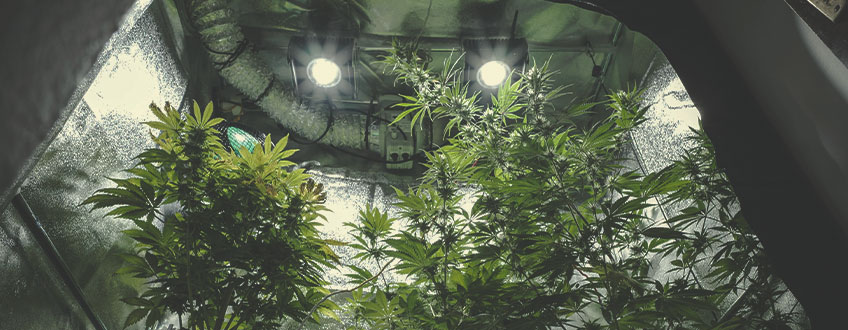
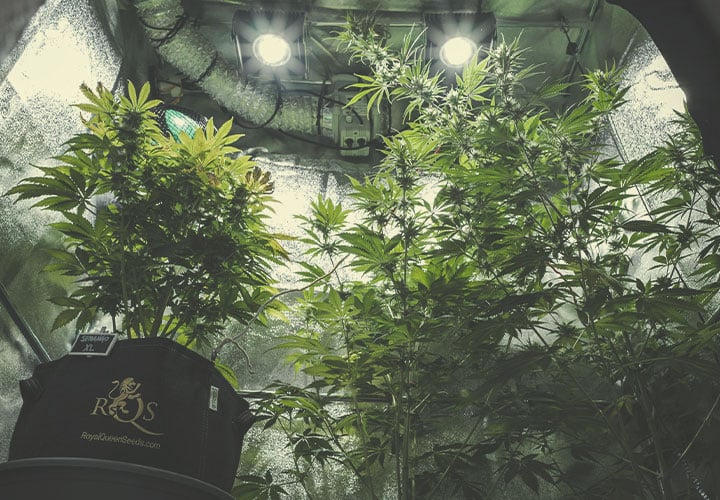
Air Circulation (Exhausts, Filters, and Fans)
Proper air circulation is nothing short of vital when growing cannabis. Without fans and/or exhausts to move air in, out, and around your grow room, stagnant air will build up around your plants, driving up the temperature and humidity while simultaneously creating a breeding ground for pathogens. Regardless of the size of your grow space, we recommend investing in some kind of fan to help move air around your indoor garden.
Fans are relatively cheap. This 40cm wall mount fan (perfect for a small grow tent), for example, is less than €40. Inline fans and exhaust, on the other hand, are a little more expensive. A couple of other options for small rooms and grow tents include the Calimaero 100m inline fan, and the Hon&Guan 125mm inline fan.
Grow Tent
Grow tents offer an affordable way to create the perfect microclimate for your plants without having to refurbish an entire room of your house. Thankfully, they also come in a number of sizes and at various price points.
What size tent you choose to buy is obviously up to you. However, most growers tend to use tents between 1–3m² in size, depending on the space they have available and how many plants they want to grow at a time.
- Mars Hydro 80×80×160 Grow Tent Kit
- Mars Hydro 100×100×180 Grow Tent Kit
- Mars Hydro 120×120×200 Grow Tent Kit
If you’re really on a budget, consider building your own grow tent. Check out this article for a simple walkthrough on how to build your own DIY grow tent in just 3 steps.
Room Refurbishments
If you’ve got the space and budget, you might be looking to refurbish an entire room dedicated to your plants, rather than limiting yourself to a tent. If that's the case, calculating the costs of these refurbishments is tricky, as they’ll vary depending on how much materials you’ll need, and the price of those materials in your area.
First off, to maximize the light given off from your grow lights, you’ll want to use reflective material on the walls of your room. White paint does a pretty good job at reflecting light, but specialised grow film and mylar tend to boast higher reflectivity.
Concerning airflow, properly ventilating large rooms is going to take large inline/exhaust systems and fans. Installing these systems might also call for longer ducts and the help of a professional. In turn, a bigger room may encourage you to grow more plants at a time. This means you’ll be working with a bigger canopy that’s going to need more light.
Other Costs to Consider
Besides your lights, fans/exhausts, and tent, you’ll also need to invest in a bunch of smaller, cheaper equipment to grow weed at home. This could include fabric pots, materials to make your own soil, and, of course, cannabis seeds. You'll also need to consider which nutrients you're buying, and perhaps make an investment in a thermometer/hygrometer combo. Some clippers and RQS trimming scissors wouldn't hurt, either.
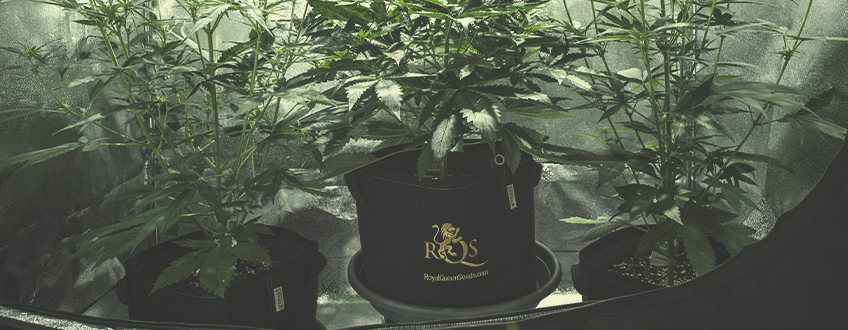
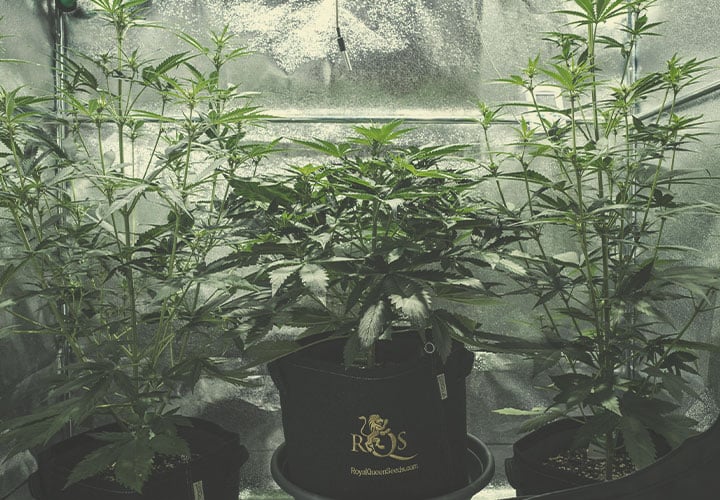
The Average Cost of an Indoor Grow Room/Tent
Below are the costs of building a small grow tent fit for almost any hobby grower using the equipment we’ve listed above. The only things we’ve left out are the cost of soil/nutrients and room refurbishments (if you choose to grow in a room rather than a tent), which can vary widely.
- Grow light: HELESIN 1000w Full Spectrum LED Grow Light, complete with Veg and Bloom triggers, cooling fans, hangers, and safety goggles. Price: €110.
- Tent: Secret Jardin Hydro Shoot Mylar Grow Tent with window, ducts, and flood tray. Price: €111.
- Exhaust: Calimaero 100mm inline fan 33W (198m³/h airflow capacity): €55.
- Fan: 40cm Orbegozo wall mount fan. Price: €32.
- Thermometer/hygrometer. Price: €13.
- Pots: 5 19L RQS fabric pots. Price: €40 total (€8 per pot).
- Seeds: 5 White Widow Automatic Seeds. Price: €35.
- Easy Start seed starter pots. Price: €7.
- Clippers and trimming scissors: Felco 2 and RQS trimming scissors. Price: €53.
TOTAL SETUP COST: €456
Keep in mind that it is possible to build a grow room that's far cheaper (especially if you opt to build a budget tent yourself) or far more expensive than the one we described above. These are just ballpark figures for a medium-sized tent fit for both beginner, intermediate, and advanced growers.
How to Calculate the Running Costs of Your Room
Besides the upfront costs of buying all the above equipment, you also need to consider the cost of running your grow room from seed to harvest. While it can be difficult to calculate these costs properly down to a tee, the formulas below can help you get a solid idea of the rough costs of operating your grow room.
To calculate the electricity requirements of your grow room, you’ll need to know the following:
- The wattage of your equipment.
- The running time for each piece of equipment per day.
- The cost of electricity in your area.
The formulas we use below will be for a 1m² and 2m tall grow tent with a 1000W light, a 60W exhaust fan, and a small 30W wall fan. Although the exhaust fan linked above is only a 33W, a 60W is much more common, especially if you are looking for a more discreet growing operation. In fact, most of these systems will be also equipped with a carbon filter, to reduce even further the smell of your plants. The growth cycle we will base our calculations on will be 4 weeks of veg and 8 weeks of flower, and the electricity price we will use is €0.2 per kilowatt-hour (the average price across Europe according to the 2019 Strom report).
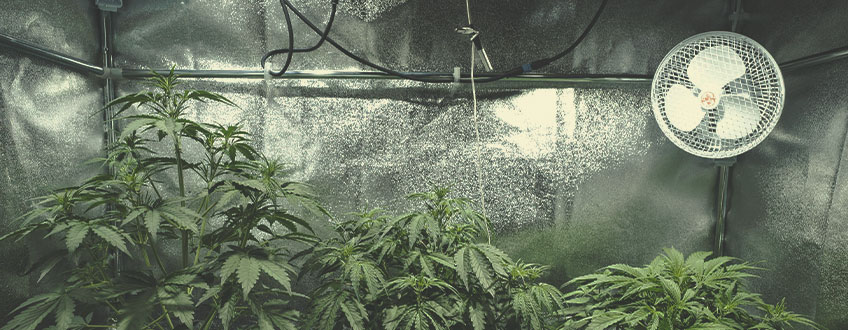
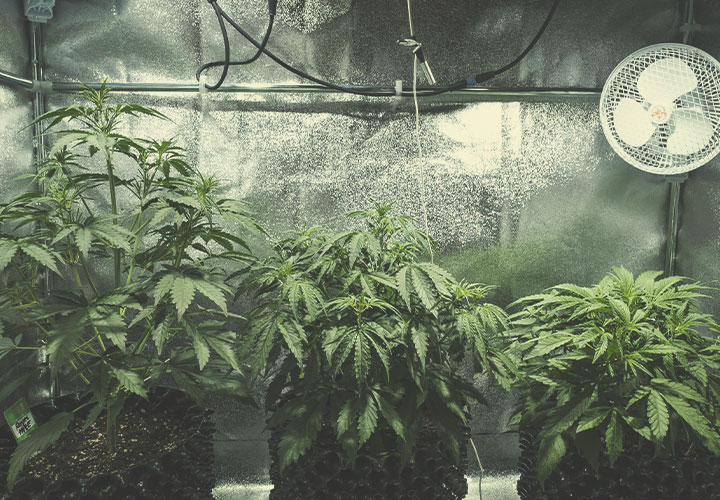
Calculating the Cost of Running Your Grow Lights
The cost of running your lights will obviously depend on the wattage of the grow light you’re using. Typically, growers will provide their plants with 50–80W of light per square foot of canopy (or 500–800W/m²), but some may push things further to increase their yields.
On average, indoor growers tend to let their plants veg for 4 weeks under an 18/6 light cycle before moving them to 12/12 cycle for 7–9 weeks for flowering. Keep in mind that flowering times can vary dramatically from one strain to another.
To calculate the cost running your grow lights, start by calculating the number of kilowatt-hours your lights need to run using the following formula:
Number of hours running x (watts/1000) = Kilowatt-hours (kWh)
Then, multiply that number by the price per kilowatt-hour of electricity in your area.
If we’re running a 1000W light 18 hours per day for 4 weeks (roughly 540 hours) of veg, then 12 hours per day for 8 weeks of flowering (roughly 720 hours), our formula would look like this:
1260 total running hours (veg + flower) x (1000 watts / 1000) = 1260kWh.
At €0.20 per kilowatt-hour, the total cost of running a 1000W grow light for 4 weeks of veg and 8 weeks of flower is €252 (1260 x 0.20).
Calculating the Cost of Running Your Fans
Fans are the best way to manage the temperature and humidity in small grow rooms. If you’re operating a larger room, you might need to invest in multiple fans, air conditioning, and humidifiers.
Both your inline and wall/floor fans will be running 24 hours per day from the beginning of your grow right through to harvest (12 weeks in the case of our example). To calculate these running costs, we’ll use the same formula we used to calculate the running costs of our lights.
For our 60W inline fan, the formula will look like this:
2160 hours running (24 hours for 90 days approx) x (60 / 1000) = 279.94 kWh
For our 30W wall fan, the formula will be:
2160 x (30/1000) = 64.8kWh.
The total cost of running both our inline and wall fan (at €0.20 per kWh for 24 hours during our entire 12-week grow) will cost €68.95 (344.74 x 0.2).
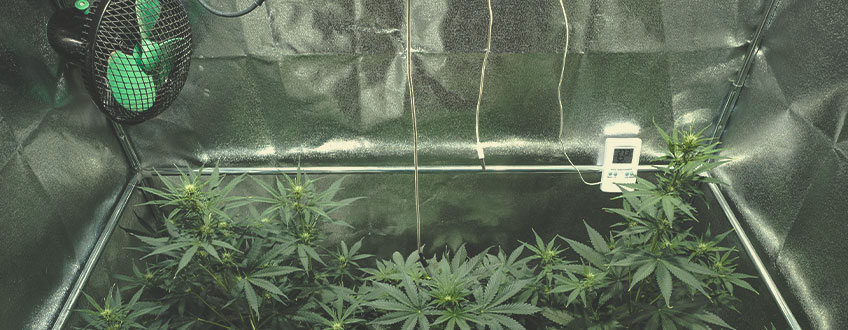
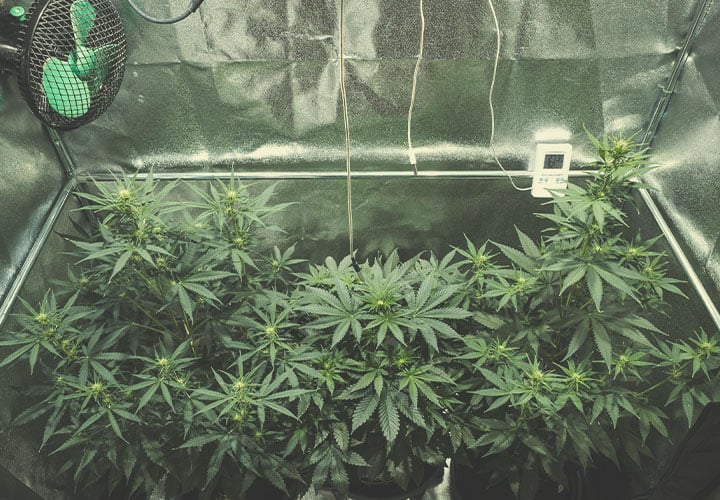
The Average Cost of Running a Grow Tent in Spain
The running costs for the tent we described above in Spain (with an average electricity price of €0.2403 per kWh) are:
- 1000W LED grow lights: €302.40 (1260kWh x €0.2403)
- 60W exhaust: €32 (129.6kWh x €0.2403)
- 30W wall fan: €15 (64.8kWh x €0.2403)
TOTAL RUNNING COST: €349.40
The Average Cost of Running a Grow Tent in Germany
The running costs for the tent we described above in Germany, where electricity costs are €0.3088 (the highest in Europe) are
- 1000W LED grow lights: €389.09 (1260kWh x €0.3088)
- 60W exhaust: €40 (129.6kWh x €0.3088)
- 30W wall fan: €20 (64.8kWh x €0.3088)
TOTAL RUNNING COST: €449.09
Note: These costs are calculated based on the average electricity rates in Spain according to the 2019 Strom Report and an average 4-week veg and 8-week flower period. The actual price of running a grow room in your area may vary greatly depending on the cost of electricity where you live and the length of your veg and bloom phases.
How to Cut Down Your Energy Consumption
As we saw above, it takes quite a bit of energy to grow cannabis indoors. Luckily, you can reduce the environmental impact of your grow room and its running costs by minimizing your energy consumption wherever possible.
These are just some of the ways you can save energy when growing weed:
1. Find the Right Size for Your Grow
Selecting the right size grow tent can help to reduce your electricity bill. All grow tents require some level of energy input to control the microclimate within, including fans for fresh air exchange and dehumidifiers to reduce mould during flowering (depending on your local climate). Smaller tents require smaller and less powerful oscillating and inline fans, and therefore less energy.
2. Use an Energy-Efficient Grow Light
How much electricity does a grow light use? It all depends on the power that it requires to run. Saving money on bills all boils down to efficiency. Before selecting a light, you need to consider what kind of growing system you want to operate. If you plan to cultivate a large number of big plants, you're going to need to purchase numerous large and powerful lights to make sure you're hitting your growing area with enough PAR to fuel optimal growth.
If you’re struggling with electricity bills but don’t want to abandon your hobby, consider scaling down. Use a small grow tent with a small and efficient light source. For example, you can raise a single plant for personal use in a 60 × 60cm grow tent using a 150W LED. This makes far more financial sense than growing the same plant in a larger tent under a bigger and more powerful light. Ultimately, try to match your power output with the number of plants you want to grow.
Mars Hydro FC1500 – 150 W LED Grow Light

660-665nm, 2800-3000K, 4800-5000K

41x40x7.2cm

150W±5%

2.85μmol/j

427.5μmol/S

Samsung LM301H EVO

70x70 cm

3.5g/watt
Buy Mars Hydro FC1500 – 150 W LED Grow Light
Mars Hydro FC1500 – 150 W LED Grow Light
|
|
660-665nm, 2800-3000K, 4800-5000K |
|
|
41x40x7.2cm |
|
|
150W±5% |
|
|
2.85μmol/j |
|
|
427.5μmol/S |
|
|
Samsung LM301H EVO |
|
|
70x70 cm |
|
|
3.5g/watt |
Buy Mars Hydro FC1500 – 150 W LED Grow Light
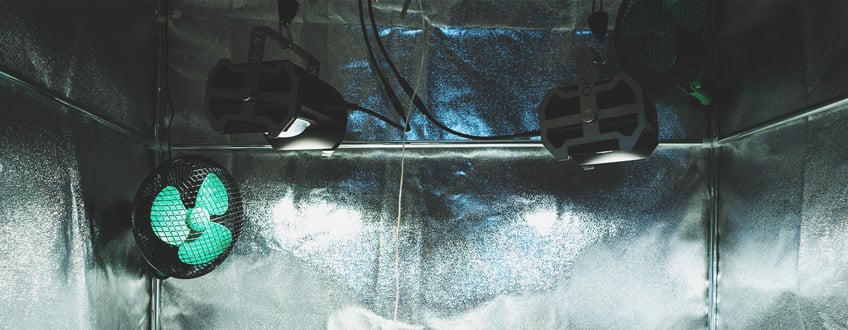
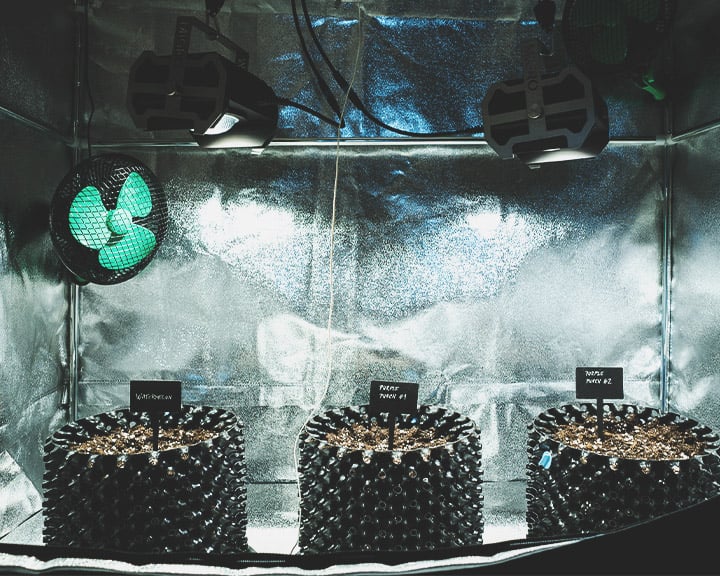
3. Go Solar
While installing solar panels can be expensive, it’s a great investment for serious growers who are producing multiple harvests a year and are serious about cutting down their energy consumption.
4. Use a Combination of Artificial and Natural Light
Your grow lights are the biggest energy consumers in your room. If you get strong, direct sunlight where you’re living (either from a big window, outdoor garden/patio, balcony, or terrace), consider growing your plants under the sun and using your grow lights as a secondary source of lighting.
5. Use Passive Air Intake
If you’re running a small grow tent, you may not need to run an inline fan to replenish the air around your plants. Simply leaving one of your ducts or ports open, along with using a small wall or floor fan, should keep the air circulating around your tent.
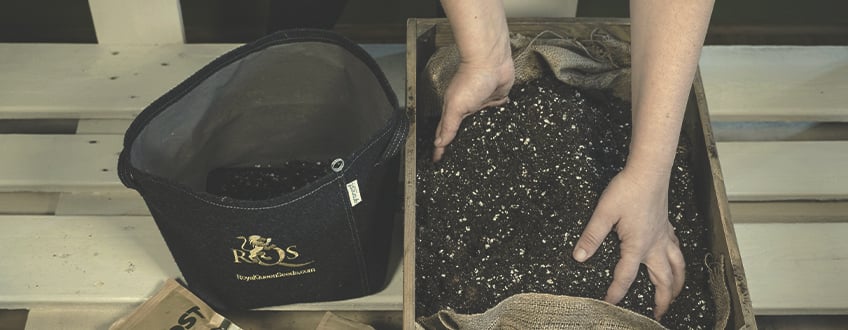
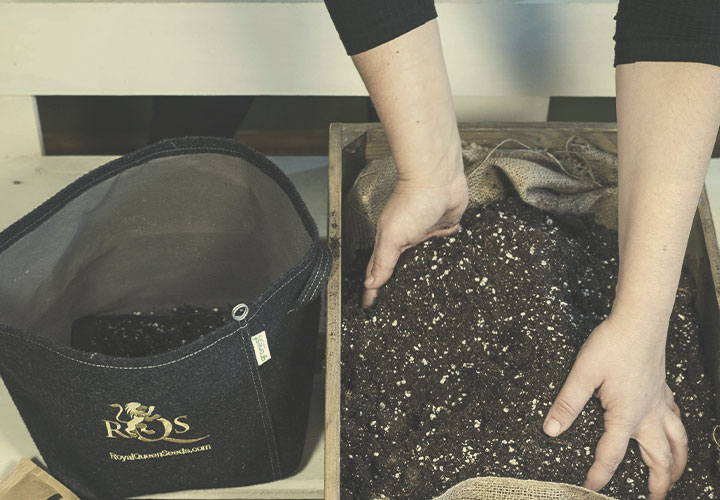
7. Audit Your Power Consumption
Saving on electricity requires you to keep a careful eye on your consumption. Once you have a rough figure, you can make changes to your setup that will lower costs. To figure out how much you're paying to run an appliance, you can use the following equation: (wattage × time) × cost of electricity. Let’s say you’re running a 250W lamp for 24 hours each day. Your light will use 6kWh of electricity daily. Multiply this by electricity costs (around 34p per unit in the UK) and you’re spending £2.04 per day. You can also monitor your household electricity use by investing in a wireless energy monitor, or monitor the use of a single device using a plug-in power monitor.
8. Run Lights at Night
Depending on your energy supplier, you’ll save money by running your lights primarily during the night. During veg, most growers run a light cycle of 18–24 hours. Photoperiod growers have to reduce this to 12 hours on and 12 hours off to trigger flowering. Off-peak hours, when energy prices are at their lowest, usually autumn between 10pm–8am. Set your timer to run over these hours. Even though you’ll have to spill over into the day, you’ll still save money by running your lights through the night.
9. Improve Your Insulation
Cannabis plants require a temperature of 18–27°C throughout the growing cycle to develop optimally. Temperatures can drop much lower than this indoors when growing in winter, especially at night. Growers in colder climates use heaters to stop things from getting too chilly. However, they’re expensive to run, especially if you never stop growing! To reduce electricity costs, you can line your grow tent with material that will insulate your space and stop temperatures from dropping too low, such as:
🪵 Rockwool
🧼 Polyfoam
🫧 Bubble foil
📃 Old blankets/sheets
How to Cut the Costs of Growing Weed at Home
There are several ways to cut down the costs of your weed growing operation. These include:
- Reducing Your Energy Consumption: Using the methods we mentioned above to reduce the energy requirements of your grow room is one of the best ways to drive down the costs of your grow.
- Using Natural Airflow and Light Wherever Possible: You don’t want to only rely on the machines, after all! Take advantage of whatever natural airflow and light you can access.
- Recycling Your Soil: Quality soil can sell for a lot of money, so rather than forking out for fresh soil each time you start a new grow, try recycling your old cannabis soil!
- Reducing Your Water Use: Cannabis is a thirsty crop. Rather than watering it using tap water, consider collecting rainwater and condensation runoff from air conditioning to reduce your water usage. Enriching your soil with perlite and vermiculite can also improve its water retention, meaning you’ll have to water your plants less frequently. Finally, you can also recycle the water from your runoff or reservoir (in hydroponics) to reduce your grow room’s/tent’s water bill.
- Making Your Own Organic Soil, Pesticides/Herbicides, and Nutrients: Using a combination of compost teas, worm castings, and natural pesticides (like salt or eucalyptus spray) is a sustainable way to grow cannabis that not only helps minimize your grow’s environmental impact but also helps take care of your pocket.
Conclusion
Building and running an indoor grow room obviously comes at a cost. Keep in mind, however, that growing your own weed indoors is an investment that, in time, will pay off every time you harvest your own bud. Rather than having to buy bits at a time from a dispensary, coffeeshop, or elsewhere, you’ll have vast quantities of flower right at your fingertips.



























